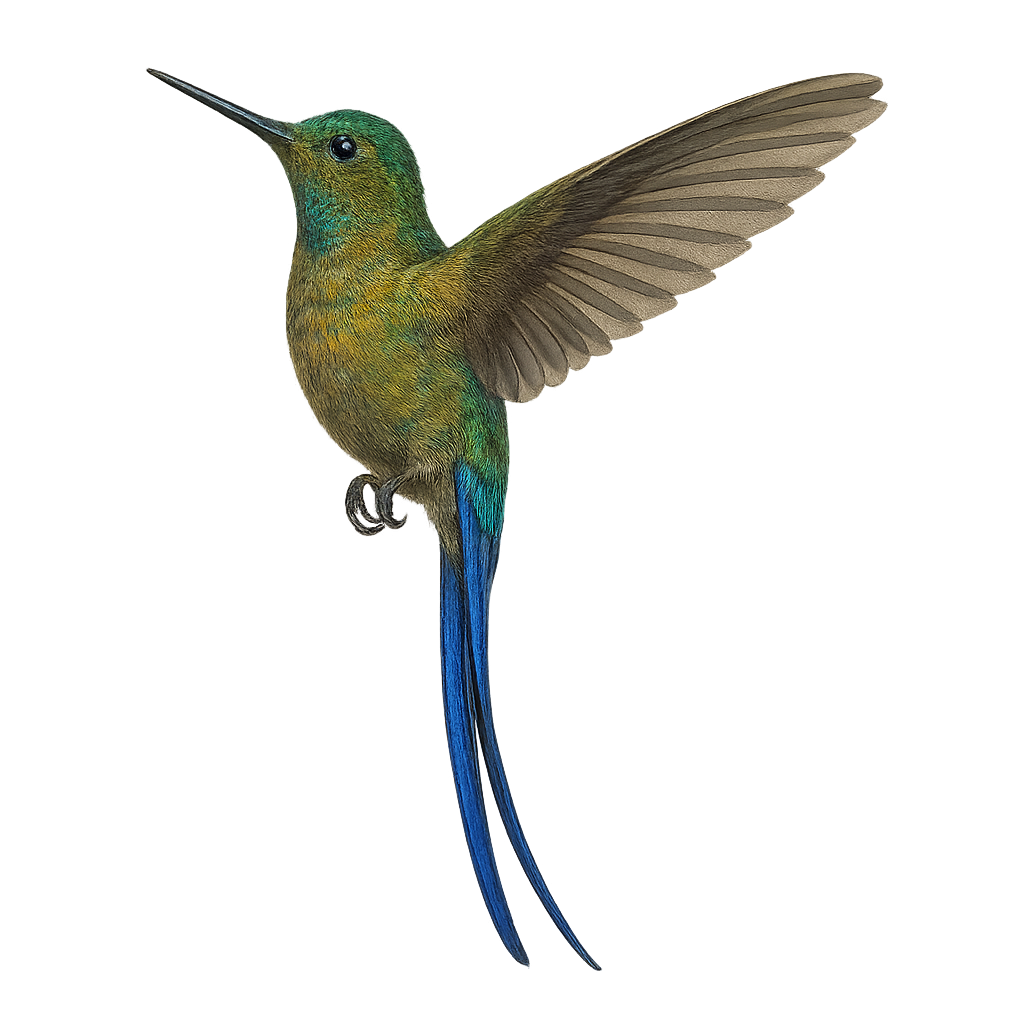Your wildlife photography guide.
Explore the violet-tailed sylph in detail, study its behavior, prepare your shots.
Where to observe and photograph the violet-tailed sylph in the wild
Learn where and when to spot the violet-tailed sylph in the wild, how to identify the species based on distinctive features, and what natural environments it inhabits. The WildlifePhotographer app offers tailored photography tips that reflect the violet-tailed sylph’s behavior, helping you capture better wildlife images. Explore the full species profile for key information including description, habitat, active periods, and approach techniques.
Violet-tailed Sylph
Scientific name: Aglaiocercus coelestis

IUCN Status: Least Concern
Family: TROCHILIDAE
Group: Birds
Sensitivity to human approach: Suspicious
Minimum approach distance: 5 m
Courtship display: March to April
Incubation: 16-19 jours
Hatchings: March to May
Habitat:
Humid forests, forest edges, mountainous areas
Activity period :
Primarily active during the day, with peak activity in the morning and late afternoon.
Identification and description:
The Violet-tailed Sylph, Aglaiocercus coelestis, is a captivating hummingbird found in the humid forests of western Ecuador and Colombia. This small bird boasts a dazzling plumage with shades of emerald green and metallic blue, and a long, elegant tail that gives it a graceful appearance. Males are distinguished by their longer tails and more vibrant colors compared to females. They primarily feed on nectar but also consume small insects to supplement their diet. Their rapid and agile flight allows them to move easily between flowers, playing a crucial role in pollination.
Recommended lens:
400 mm – adjust based on distance, desired framing (portrait or habitat), and approach conditions.
Photography tips:
To photograph the Violet-tailed Sylph, focus on well-lit areas of humid forests where these birds feed. Use a telephoto lens of 400mm or more to capture precise details of their iridescent plumage. Be patient and wait for them to perch on a branch or flower. The natural light of the morning or afternoon will highlight their vibrant colors. Avoid sudden movements to prevent scaring them and maintain a safe distance of at least 5m.
The WildlifePhotographer App is coming soon!
Be the first to explore the best nature spots, track rutting seasons, log your observations, and observe more wildlife.
Already 1 430 wildlife lovers subscribed worldwide

